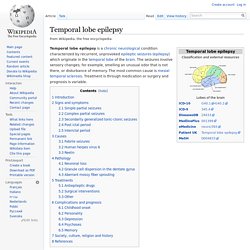

Where Optimism Lives. 15 styles of Distorted Thinking. 15 styles of Distorted Thinking Filtering: You take the negative details and magnify them while filtering out all positive aspects of a situation.

Polarized Thinking: Things are black or white, good or bad. You have to be perfect or you're a failure. There is no middle ground. Overgeneralization: You come to a general conclusion based on a single incident or piece of evidence. Checklist for Hidden Anger Procrastination in the completion of imposed tasks. 10 Mind-Blowing Theories That Will Change Your Perception of the World. Reality is not as obvious and simple as we like to think.

Some of the things that we accept as true at face value are notoriously wrong. Scientists and philosophers have made every effort to change our common perceptions of it. The 10 examples below will show you what I mean. 1. Great glaciation. Great glaciation is the theory of the final state that our universe is heading toward. 2. Solipsism is a philosophical theory, which asserts that nothing exists but the individual’s consciousness. Don’t you believe me? As a result, which parts of existence can we not doubt? 3. George Berkeley, the father of Idealism, argued that everything exists as an idea in someone’s mind. A Little Weird? Prone to Depression? Blame Your Creative Brain.
Whenever you want to do something extraordinary, risky, or scary in your life (something that you know in your heart that you need to do, but it would really be more convenient to ignore it and just not do it), it’s essential to surround yourself with inspiring, encouraging, like-minded people. If they’re leaders in their own right who to a certain degree have done what you long to do, even better. I first met Gwyneth Leech last summer at my nephew’s first birthday party in Brooklyn (she’s my sister’s husband’s cousin). We were chatting idly until the moment she mentioned that she, a lifelong artist, had “accidentally” started creating art on used coffee cups, drawing to pass time in PTA meetings.
I get as excited about a great story as some women get about shoes, and my story sensors started shrieking immediately. Gwyneth has become a close friend and a beacon of inspiration and encouragement in my life as I contemplate great leaps of faith and creation. Can you relate to this? Dr. Temporal lobe epilepsy. Introduction[edit] Over forty types of epilepsy are recognised and they are divided into two main categories: Partial seizures and generalized seizures.

Partial seizures account for approximately sixty percent of all adult cases.[1] Temporal lobe epilepsy (TLE) is the single most common form of partial seizure.[2] Signs and symptoms[edit] When a seizure begins in the temporal lobe, the symptoms experienced by the patient, and the signs seen by bystanders, depend on the precise location of the seizure focus. In 1981, the ILAE recognized three types of seizures occurring in temporal lobe epilepsy. Simple partial seizures[edit] Simple partial seizures (SPS) involve small areas of the temporal lobe such as the amygdala and hippocampus. A simple partial seizure may or may not progress to any of the seizure types listed below.[6]
All-Natural Sleep Aids. Do you have trouble falling asleep at night but dread the idea of taking sleeping pills and dealing with potential side effects? If you’re looking for alternate ways to induce the zzz’s, here are some natural remedies that can help lull you into dreamland. MelatoninMela…what? This natural hormone, which is made by the body’s pineal gland, is available over the counter, and many health experts say it can safely help you get drowsy before bed (it may even have immune-stimulating and antioxidant benefits, too). But, as with all herbal and natural remedies, it’s best to get your doctor’s OK first.
“High levels of melatonin may raise the level of another hormone, prolactin, aggravating the risk of depression or infertility,” says Jacob Teitelbaum, MD, an internist and the author of From Fatigued to Fantastic! Right brain, left brain. Synesthesia. How someone with synesthesia might perceive (not "see") certain letters and numbers.

Synesthetes see characters just as others do (in whichever color actually displayed), yet simultaneously perceive colors as associated to each one. Synesthesia (also spelled synæsthesia or synaesthesia; from the Ancient Greek σύν syn, "together", and αἴσθησις aisthēsis, "sensation") is a neurological phenomenon in which stimulation of one sensory or cognitive pathway leads to automatic, involuntary experiences in a second sensory or cognitive pathway.[1][2][3][4] People who report such experiences are known as synesthetes. Difficulties have been recognized in adequately defining synesthesia:[5][6] many different phenomena have been included in the term synesthesia ("union of the senses"), and in many cases the terminology seems to be inaccurate. A more accurate term may be ideasthesia. Characteristics[edit] The Power of Art: Can music treat ADHD?
Dr Oliver Sacks - 'Narrative and Medicine: The Importance of the Case History' Oliver Sacks: What hallucination reveals about our minds.